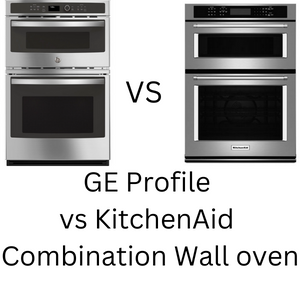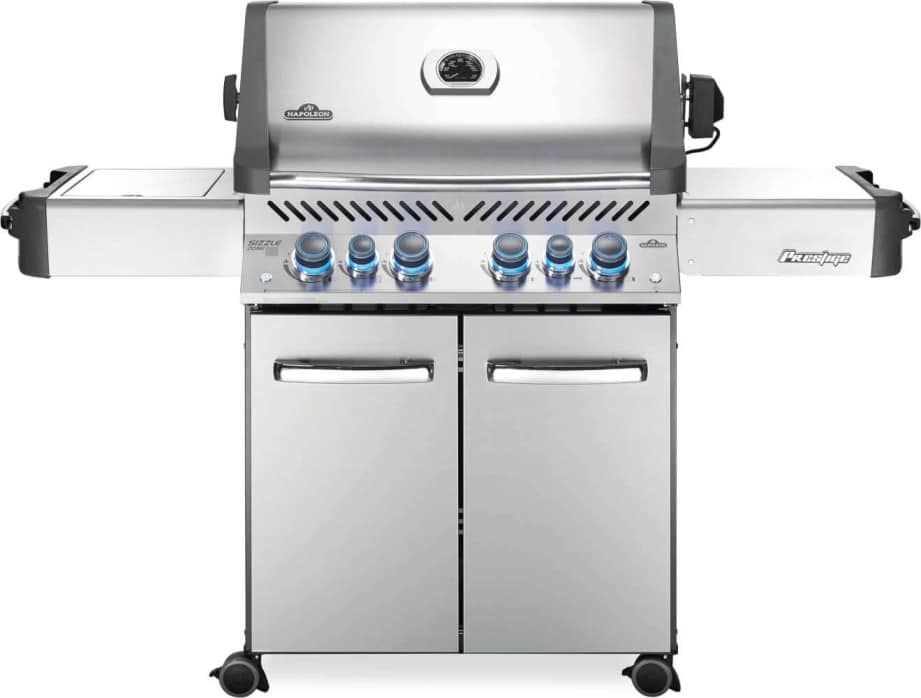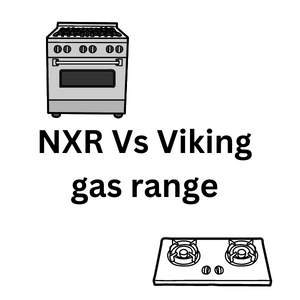This article will compare GE (General Electronics) and KitchenAid wall ovens. There are a few key differences when comparing GE and KitchenAid wall ovens. The width of the KitchenAid model is greater, at 30 inches, compared to 26 3/4 for the GE oven. The KitchenAid unit also weighs more, at 250 pounds, versus 205 for the GE wall oven. A heavy wall oven like KitchenAid is usually more durable and of higher quality than a light one. It may also be better at retaining heat, which can be beneficial if you cook something that requires a long cook time.
A wall oven is a great addition to any kitchen, providing an extra cooking space that can come in handy when entertaining or preparing large meals. Wall ovens also tend to be more energy-efficient than traditional range ovens, and some models offer unique features like convection cooking and self-cleaning cycles.
Comparison Strategy
We chose two models of the same price range to compare GE Profile and KitchenAid. These models are GE Profile PK7800SKSS and KitchenAid KOCE500ESS. Both of these models are combination wall ovens.
Comparison Table
| Features | GE Profile | KitchenAid |
| Brand | GE | KITCHENAID |
| Model | PK7800SKSS | KOCE500ESS |
| Series | Profile | _______ |
| Certification | _______ | _______ |
| Dimensions (height –width-depth) | 42 3/8 H x 26 3/4 W x 26 7/8 D | 42-1/2″ height x. 30″ width x. 27-1/8″ depth |
| Weight | 205.0 lbs | 250 Ibs |
| Cooking Modes | Hot | _______ |
| Total Modes | 10-12 cooking modes | 10-12 cooking modes |
| Sabbath | Yes | Yes |
| Other accessories | Convection Bake+ Multi-Rack + Roast + Bake +Broil (Lower Oven) | Bake + Broil + Roast + Bake Rack |
| Configuration Double | yes | Yes |
| Colour | Stainless steel / Black stainless steel | Stainless steel |
| Interior colour Stainless steel | Yes | Blue |
| Control Type | Dial | Knob |
| Control Panel and its material | Glass TouchPad | TouchPad |
| Power Source | Electric | Electric |
| Microwave | Yes | Yes |
| Fingerprint | No | No |
| Viewing Window | Yes | Yes |
| Clock | Digital | Digital |
| Wi-Fi | No | Yes |
| Bluetooth | No | No |
| Alexa/Google | No | No |
| Remote Control | No | ______ |
| Capacity | Total 6 (Cu. Ft) 1.7 (Upper) + 4.3 (Cu. Ft Lower) | 1.4 (cu ft upper oven) + 5.0 (cu ft lower oven) |
| Oven Racks | 3 | 3 |
| Temperature DisplayDigital | Yes | Yes |
| Temp prob | No | Yes |
| Timer | Yes | Yes |
| Self-Cleaning | Yes | Yes |
| Steam Oven | No | No |
| Steam Clean | Yes | No |
| Removable Doors | Yes | Yes |
| Custom cook Mode | _____ | _____ |
| Interior bulb | 1 Halogen upper 2 Halogen down | Two Halogen Lights |
| Cooking Watts | 1000W | 900W |
| Watts | 3,400 W | 4,000 W |
| Volts | 208-240 V | 240v |
| Ampere | 30 | 40 |
| Price | $4,400 | $4,599 |
Brand comparison
GE was founded in 1892 by Thomas Edison, one of the most famous inventors of all time. The company has been involved in everything from appliances to light bulbs to aircraft engines and is now one of the largest multinational corporations in the world. On the other hand, KitchenAid is a much newer brand, founded in 1919. The company is best known for its kitchen appliances, which are now sold in over 170 countries around the globe.
Width Comparison
As told earlier, the KitchenAid wall oven is wider than GE. A KitchenAid wall oven with a broader width will accommodate more oversized items, such as a turkey or a large casserole dish. It may also have more interior space, which can be helpful if you do a lot of baking or cooking for large groups.
On the other hand, a KitchenAid wall oven may also stick out further from the wall, which could be an issue if you have limited space in your kitchen.
Racks
Both the KitchenAid and GE Profile wall ovens have three racks. These wall oven racks can be helpful in several ways. They can make it easier to access items in the oven, and they can also help to promote even cooking by providing more surface area for heat to circulate.
Steam Cleaning
Steam cleaning is a feature that some wall ovens have that can help to loosen and remove stuck-on food residue. This can be a helpful way to clean your oven without harsh chemicals. The KitchenAid wall oven lacks the feature of steam cleaning. So if this feature is important for you, you should opt for GE Profile.
Control Type
GE Profile wall oven has a dial type to change the temperature, while KitchenAid has a touch screen. There is no definitive answer as to which type of control is better in a wall oven. It really depends on your personal preference. Some people prefer the simplicity of knob controls, while others find touch screens more user-friendly.
Alexa and voice control
Both of these wall ovens lack the feature of Alexa. Alexa is a voice-activated assistant that can be used to control several smart devices, including some wall ovens. With Alexa, you can use your voice to set timers, preheat the oven, and even check on the status of your food. So if you are looking for this feature, you should opt for some other model.
Temperature Probe
A temperature probe is a feature that some wall ovens have that allows you to insert a probe into the food that you are cooking. This can help to ensure that your food is cooked to the proper temperature, which can be especially helpful when cooking meats.
GE Profile wall oven lacks the feature of temperature probing. However, this feature is present in the KitchenAid wall oven.
WiFi Feature
A KitchenAid wall oven with WiFi capabilities can be controlled remotely using your smartphone or tablet using the KitchenAid® app available for both Android and Apple devices. This can be helpful if you need to start the oven while you are away from home or if you want to check on the status of your food while it is cooking. This vital feature is missing in the GE Profile wall oven.
Electricity usage
The KitchenAid wall oven uses more electricity (4,000 watts) as compared to the GE Profile wall oven (3400 watts). If a wall oven uses more watts, it means that it will use more energy. This could lead to higher electric bills. Additionally, a wall oven with more watts may not be as energy-efficient as one with fewer watts.
Convection Oven
Both (GE and KitchenAid) of these wall ovens have an upper portion for a convection oven. A convection microwave can be used as both a microwave and a convection oven. This can be helpful if you want the convenience of a microwave but also need the ability to bake or roast food.
Capacity
GE Profile wall ovens the microwave has more capacity as compared to the KitchenAid wall oven’s microwave portion. More capacity in the upper microwave portion of the wall oven means that you will be able to cook larger items in the microwave. This can be helpful if you frequently need to reheat larger items like casseroles or pizzas.
The capacity of the lower oven of KitchenAid oven is more (5 cubic feet) as compared to GE Profile (4.3 cubic feet. More capacity in the lower portion of the wall oven means that you will be able to cook larger items in the oven. This can be helpful if you frequently need to bake large items like casseroles or pies.
Removable doors
Both GE Profile and KitchenAid wall ovens have removable doors. Removable doors can be helpful if you need to clean the oven door or if you want to replace the door entirely. Some models even have self-cleaning features that make it easy to keep your oven clean.
Sabbath mode
Both GE Profile and KitchenAid wall ovens have Sabbath mode. Sabbath mode is a feature that some wall ovens have that allows you to disable the oven’s automatic shut-off feature. This can be helpful if you need to keep food warm for an extended period of time.
Price Comparison
Both GE (General Electronics) and KitchenAid wall ovens have nearly the same price of $4500. So, if you’re looking for a wall oven with the same basic features, you’ll pay around the same price no matter which brand you choose.
Steam Oven
Both GE and KitchenAid wall ovens lack the feature of a Steam oven. A steam oven can be used to cook food using steam. This can be helpful if you want to retain the moisture in your food or are looking for a healthier cooking option.
Self Cleaning
Both GE and KitchenAid wall ovens have self-cleaning feature. A self-cleaning feature can be helpful if you want to keep your oven clean with minimal effort. This feature can be activated with the push of a button and will clean the oven by using high temperatures to burn off any food residue.
Light Comparison
GE Profile has three halogen lights(one upper and two down), while KitchenAid has only two halogen lights. So, if you want more light while cooking, GE Profile is the better option.
Installation Tips
For a double-wall oven by GE Profile or KitchenAid, it’s recommended that you have an electrician install a dedicated circuit. This will ensure that your oven has the power it needs to operate properly. Additionally, you’ll need to ensure that your kitchen’s opening is large enough to accommodate a double oven. Most double ovens are approximately 30 inches wide, so you’ll need to make sure that your opening is at least that wide. Finally, you’ll need to decide whether you want a side-by-side or stacked configuration. A side-by-side configuration will require two separate electrical circuits, while a stacked configuration will only require one.
Buying tips
When buying a wall oven from GE or KitchenAid, it’s important to consider the size of the oven and the features that you want. You’ll also need to decide whether you want a single or double-wall oven. Additionally, you should ensure that the oven you choose has a self-cleaning feature and a built-in timer. Finally, you’ll need to make sure that the oven you choose is within your budget.
Common Settings
The most common settings in a GE or KitchenAid double wall oven are bake, broil, and self-clean. Bake is typically used for cooking food evenly at a consistent temperature, while broil is used for cooking food quickly under high heat. The self-clean setting is typically used to clean the oven by using high temperatures to burn off any food residue.
Wiring Instructions
The recommended wire size for a wall oven from GE or KitchenAid is 8-gauge. This will ensure that your oven has the power it needs to operate properly. Additionally, you should ensure that your oven’s circuit breaker is rated for 30 amps. A circuit breaker is important for a wall oven because it protects your oven from overloading.
Conclusion
When deciding between a GE and KitchenAid wall oven, it is essential to consider your needs and preferences. The KitchenAid may be a better option if you are looking for an oven with more features. However, the GE may be a better option if you are looking for more lightning and WiFi control. Ultimately, your best oven will depend on your specific needs and preferences.














